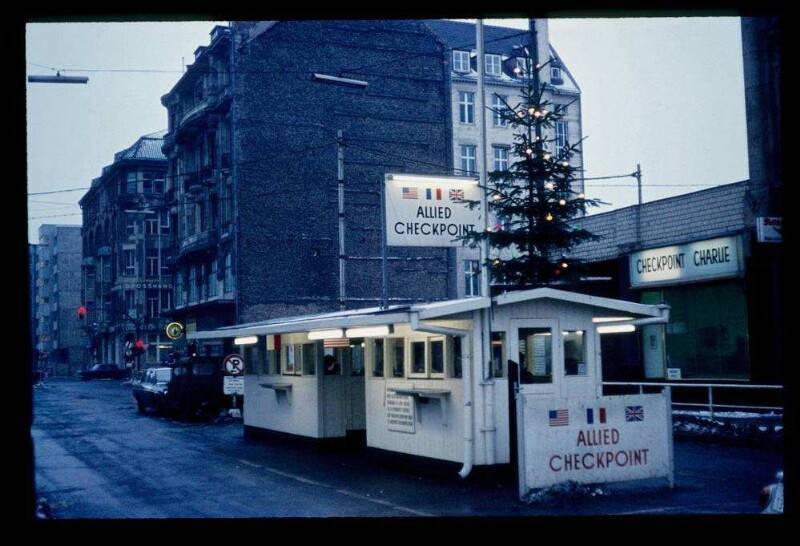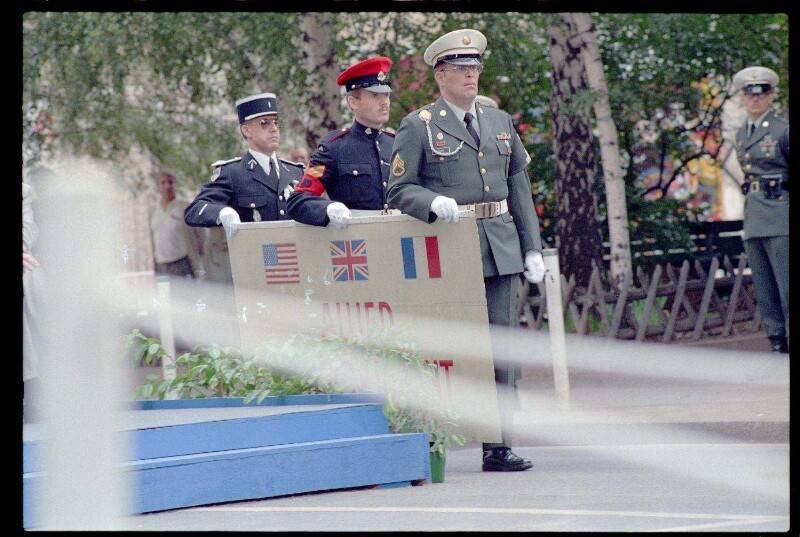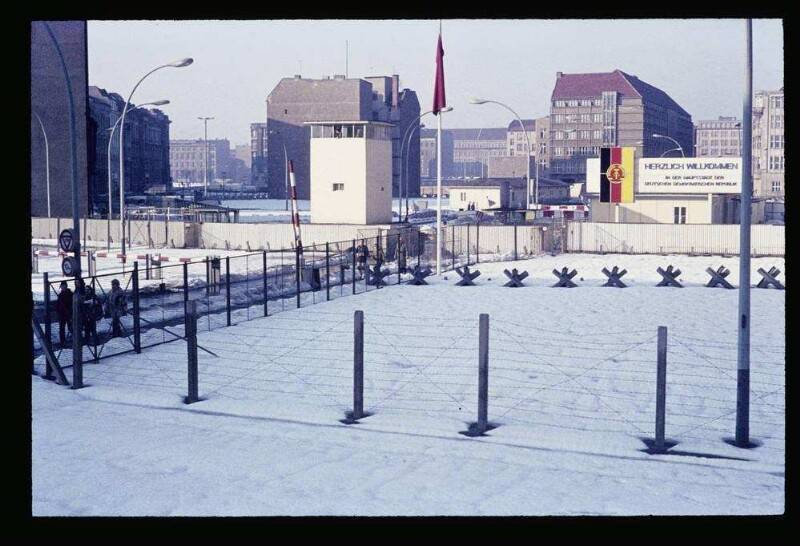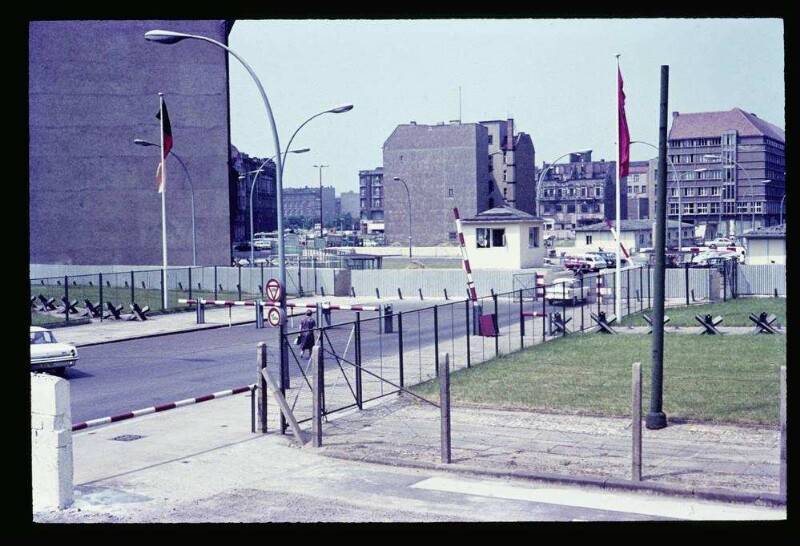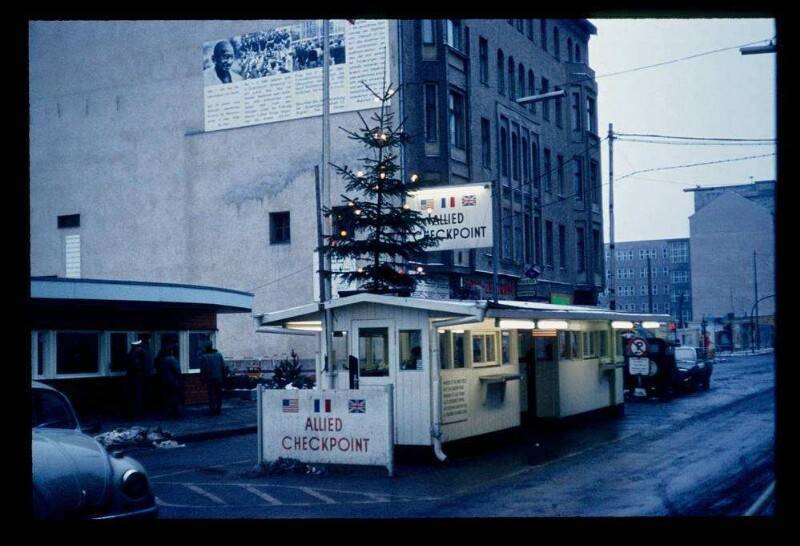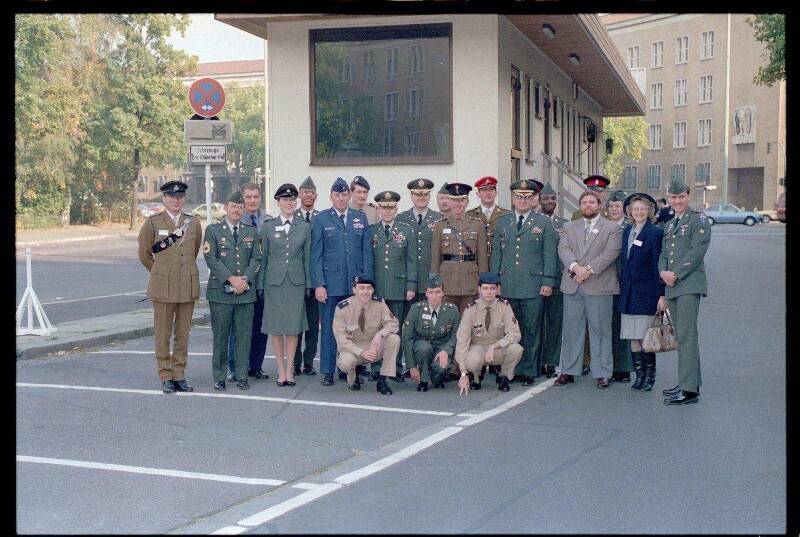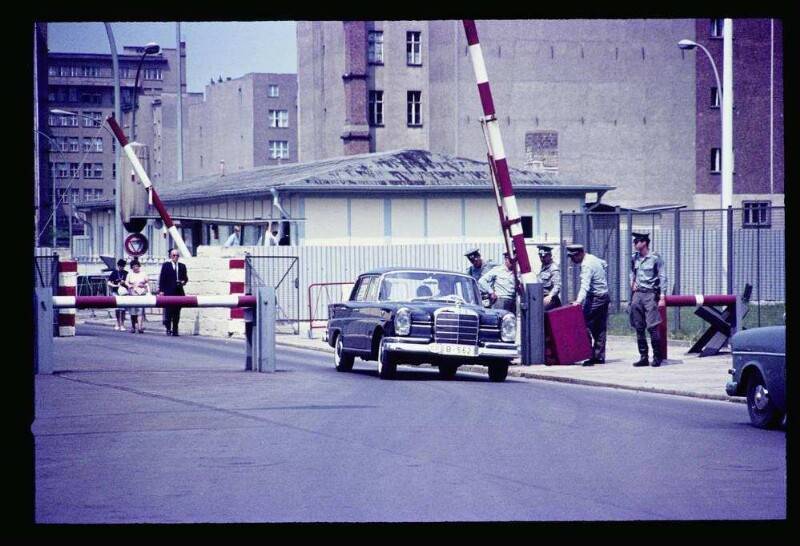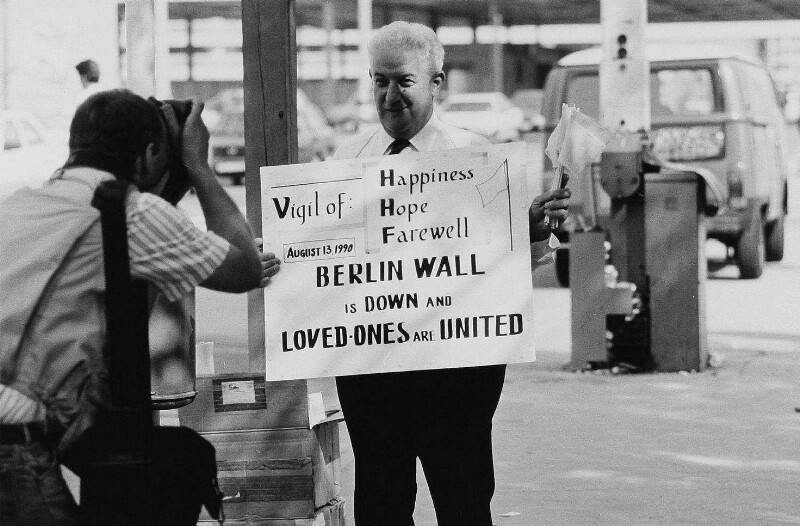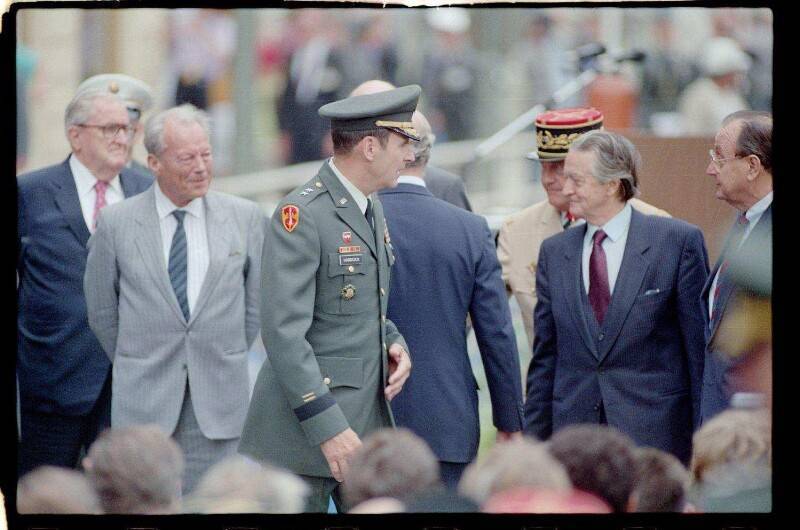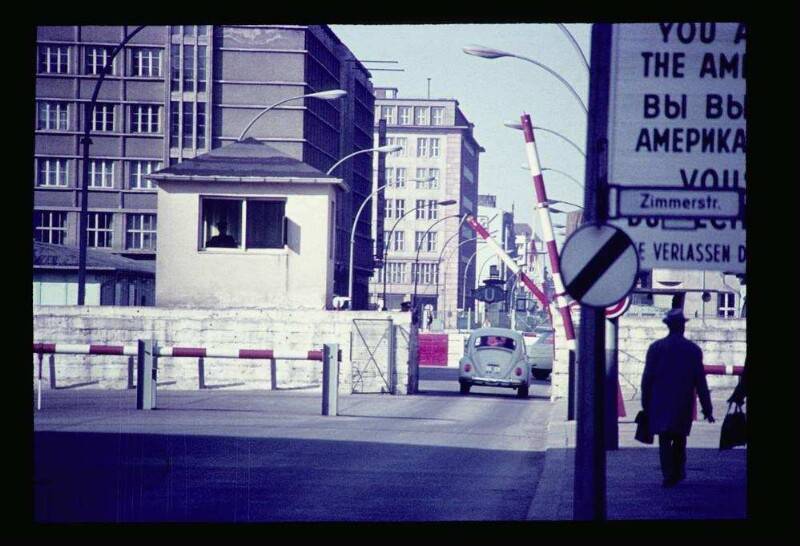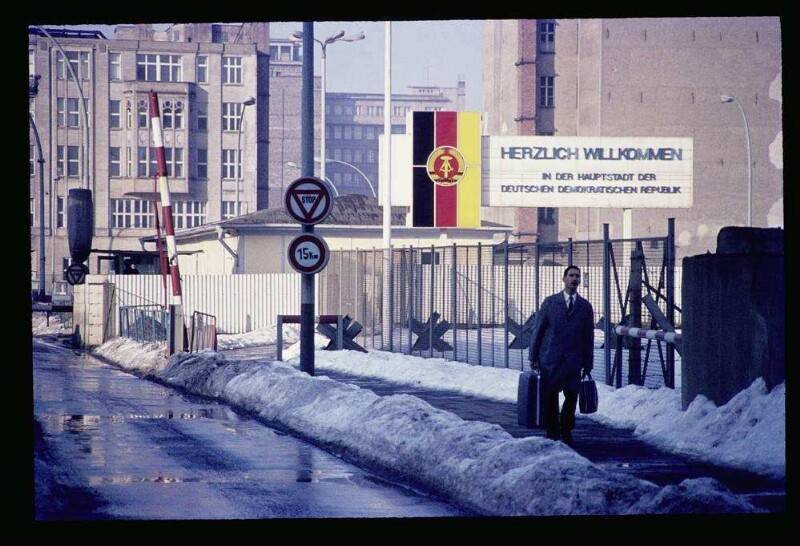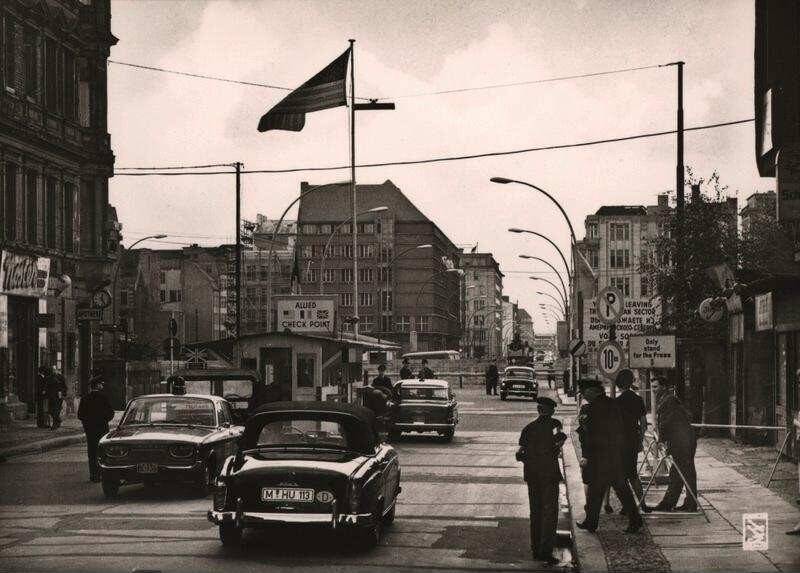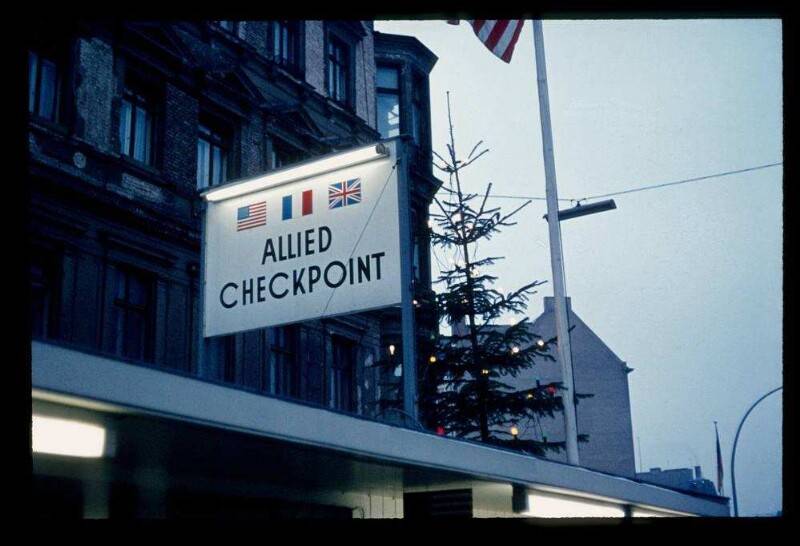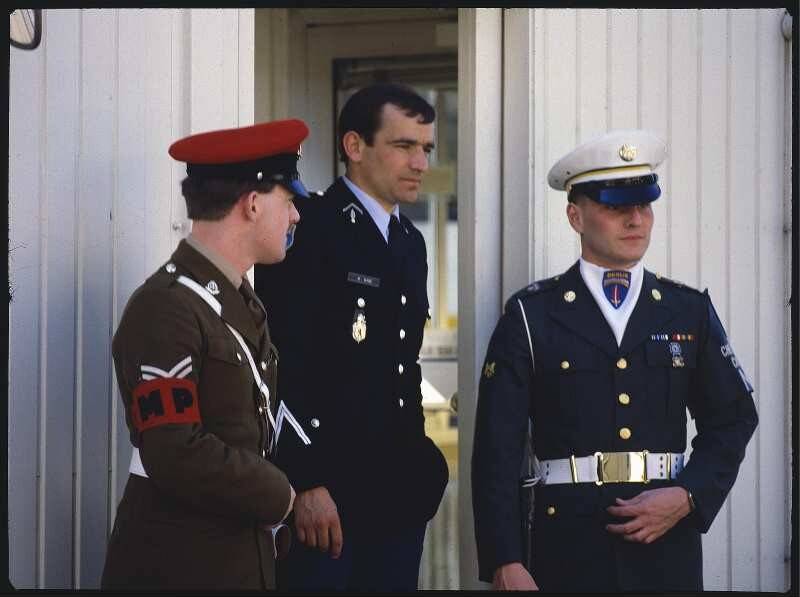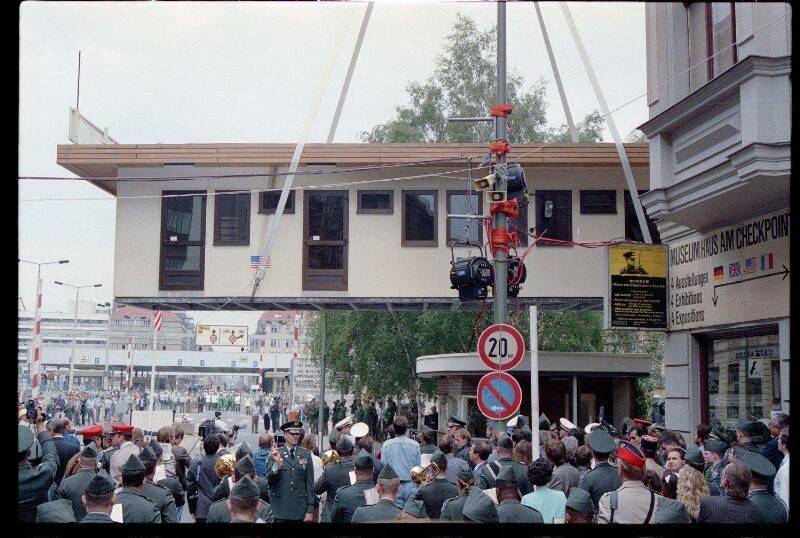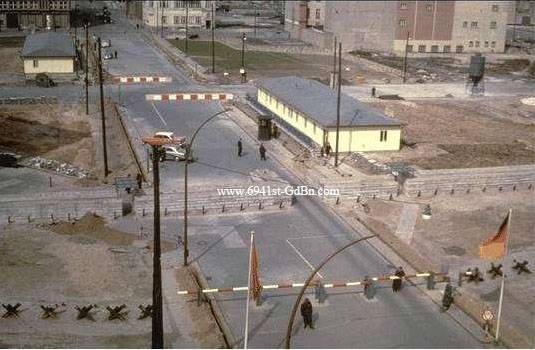Background
Emigration restrictions, the Inner German border and Berlin
Further information: Eastern Bloc emigration and defection and Inner German border
By the early 1950s, the Soviet method of restricting emigration was emulated by most of the rest of the Eastern Bloc, including East Germany. However, in occupied Germany, until 1952, the lines between East Germany and the western occupied zones remained easily crossed in most places. Subsequently, the inner German border between the two German states was closed and a barbed-wire fence erected.
Even after closing of the inner German border officially in 1952, the city sector border in between East Berlin and West Berlin remained considerably more accessible than the rest of the border because it was administered by all four occupying powers. Accordingly, Berlin became the main route by which East Germans left for the West. Hence the Berlin sector border was essentially a „loophole“ through which Eastern Bloc citizens could still escape.
The 3.5 million East Germans who had left by 1961 totaled approximately 20% of the entire East German population. The emigrants tended to be young and well educated. The loss was disproportionately great among professionals — engineers, technicians, physicians, teachers, lawyers and skilled workers.
Berlin Wall constructed
The brain drain of professionals had become so damaging to the political credibility and economic viability of East Germany that the resecuring of the Soviet imperial frontier was imperative. Between 1949 and 1961, over 2½ million East Germans fled to the West. The numbers increased during the three years before the Berlin Wall was erected, with 144,000 in 1959, 199,000 in 1960 and 207,000 in the first seven months of 1961 alone. The East German economy suffered accordingly.
On 13 August 1961, a barbed-wire barrier that would become the Berlin Wall separating East and West Berlin was erected by the East Germans. Two days later, police and army engineers began to construct a more permanent concrete wall. Along with the wall, the 830-mile (1336 km) zonal border became 3.5 miles (5.6 km) wide on its East German side in some parts of Germany with a tall steel-mesh fence running along a „death strip“ bordered by mines, as well as channels of ploughed earth, to slow escapees and more easily reveal their footprints.
Checkpoint
Checkpoint Charlie was a crossing point in the Berlin Wall located at the junction of Friedrichstraße with Zimmerstraße and Mauerstraße (which for older historical reasons coincidentally means ‚Wall Street‘). It is in the Friedrichstadt neighborhood. Checkpoint Charlie was designated as the single crossing point (on foot or by car) for foreigners and members of the Allied forces. (Members of the Allied forces were not allowed to use the other sector crossing point designated for use by foreigners, the Friedrichstraße railway station).
The name Charlie came from the letter C in the NATO phonetic alphabet; similarly for other Allied checkpoints on the Autobahn from the West: Checkpoint Alpha at Helmstedt and its counterpart Checkpoint Bravo at Dreilinden, Wannsee in the south-west corner of Berlin. The Soviets simply called it the Friedrichstraße Crossing Point (КПП Фридрихштрассе, KPP Fridrikhshtrasse). The East Germans referred officially to Checkpoint Charlie as the Grenzübergangsstelle („Border Crossing Point“) Friedrich-/Zimmerstraße.
As the most visible Berlin Wall checkpoint, Checkpoint Charlie was featured in movies and books. A famous cafe and viewing place for Allied officials, armed forces and visitors alike, Cafe Adler („Eagle Café“), was situated right on the checkpoint.
The development of the infrastructure around the checkpoint was largely asymmetrical, reflecting the contrary priorities of East German and Western border authorities. During its 28-year active life, the infrastructure on the Eastern side was expanded to include not only the wall, watchtower and zig-zag barriers, but a multi-lane shed where cars and their occupants were checked. However, the Allied authority never erected any permanent buildings. A wooden shed was replaced during the 1980s by a larger metal structure, now displayed at the Allied Museum in western Berlin. Their reasoning was that they did not consider the inner Berlin sector boundary an international border and did not treat it as such.
Related incidente
Stand-off between Soviet and U.S. tanks in October 1961
Soon after the construction of the Berlin Wall in August 1961, a stand-off occurred between US and Soviet tanks on either side of Checkpoint Charlie. It began on 22 October as a dispute over whether East German border guards were authorized to examine the travel documents of a US diplomat based in West Berlin named Allan Lightner heading to East Berlin to watch an opera show there, since according to the agreement between all four Allied powers occupying Germany, there was to be free movement for Allied forces in Berlin and that no German military forces from either West Germany or East Germany were to be based in the city, and moreover the Western Allies did not (initially) recognise the East German state and its right to remain in its self-declared capital of East Berlin. Instead, Allied forces only recognised the authority of the Soviets over East Berlin rather than their East German allies. By 27 October, ten Soviet and an equal number of American tanks stood 100 yards apart on either side of the checkpoint. This stand-off ended peacefully on 28 October following a US-Soviet understanding to withdraw tanks and reduce tensions. Discussions between US Attorney General Robert F. Kennedy and KGB spy Georgi Bolshakov played a vital role in realizing this tacit agreement.
Early escapes
The Berlin Wall was erected with great speed by the East German government in 1961, but there were initially many means of escape that had not been anticipated. For example, Checkpoint Charlie was initially blocked only by a gate, and a citizen of the GDR (East Germany) smashed a car through it to escape, so a strong pole was erected. Another escapee approached the barrier in a convertible, the windscreen removed prior to the event, and slipped under the barrier. This was repeated two weeks later, so the East Germans duly lowered the barrier and added uprights.
Death of Peter Fechter
On 17 August 1962, a teenaged East German, Peter Fechter, was shot in the pelvis by East German guards while trying to escape from East Berlin. His body lay tangled in a barbed wire fence as he bled to death in full view of the world’s media. He could not be rescued from West Berlin because he was a few metres inside the Soviet sector. East German border guards were reluctant to approach him for fear of provoking Western soldiers, one of whom had shot an East German border guard just days earlier. More than an hour later, Fechter’s body was removed by the East German guards. A spontaneous demonstration formed on the American side of the checkpoint, protesting against the action of the East and the inaction of the West.
A few days later, a crowd threw stones at Soviet buses driving towards the Soviet War Memorial, located in the Tiergarten in the British sector; the Soviets tried to escort the buses with armoured personnel carriers (APCs). Thereafter, the Soviets were only allowed to cross via the Sandkrug Bridge crossing (which was the nearest to Tiergarten) and were prohibited from bringing APCs. Western units were deployed in the middle of the night in early September with live armaments and vehicles, in order to enforce the ban.
